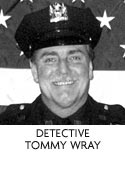The first thing to look for is an increase in the kinds of murders that are harder to solve, such as:
– Murders involving firearms. When someone shoots someone they don’t necessarily get close enough to leave DNA evidence.
– Murders without witnesses or uncooperative witnesses. For instance, cases involving organized crime or gangs.
– Murders where the victim and killer are strangers to each other. When there’s no connection between the killer and their victim, it’s harder to solve.
– Murders that happened outside, and late at night. Again, less trace evidence than murders that take place indoors, and fewer witnesses.
I went down to the Municipal Library and looked at the FBI’s Uniform Crime reports going back to 1990. Has there been an increase in any of these areas?
There hasn’t been any appreciable increase in murders with firearms. There also hasn’t been an increase in murders by strangers (of the ones they know about — they can’t say for unsolved murders, of course). They don’t have data for gangs or organized crime. Does anyone know who keeps hard data on organized crime and gang murders? I’ve been asking around and so far, no one has noticed an increase in gang or organized crime murders, but this is strictly anecdotal, and I haven’t yet questioned people who specifically study these kinds of murders.
I’m still gathering data for murders that took place outdoors.
It’s an interesting and important question, these degrading clearance rates. Why haven’t so many years of accumulated experience and scientific discovery and application made more of a difference?











